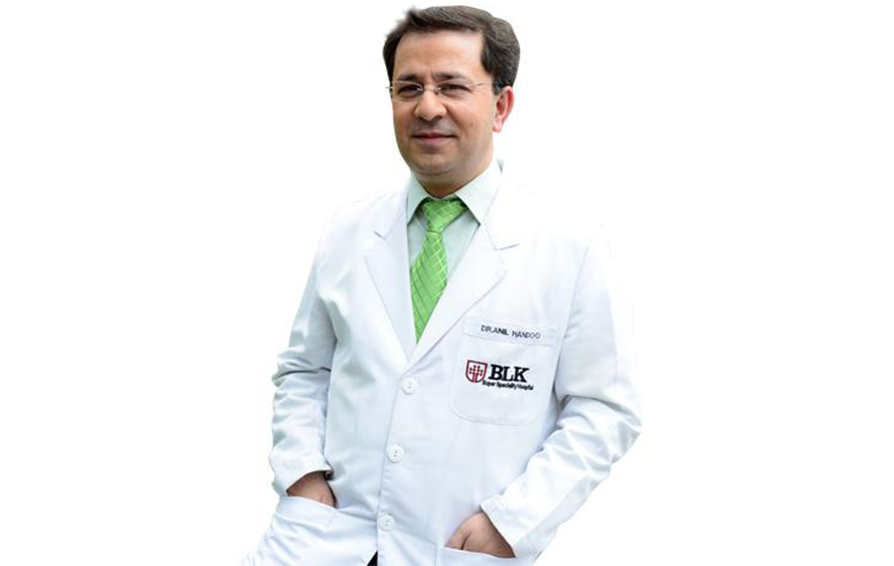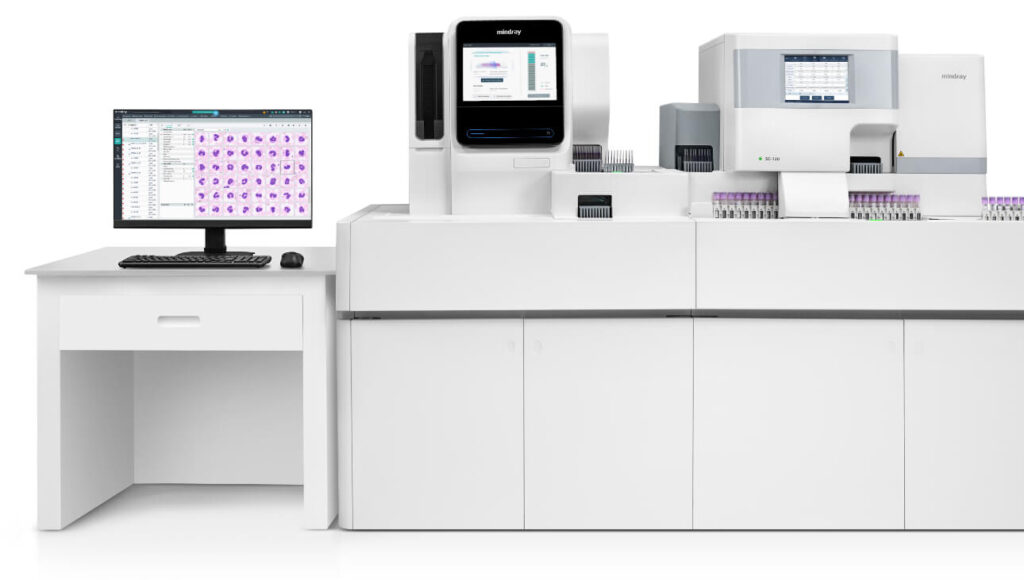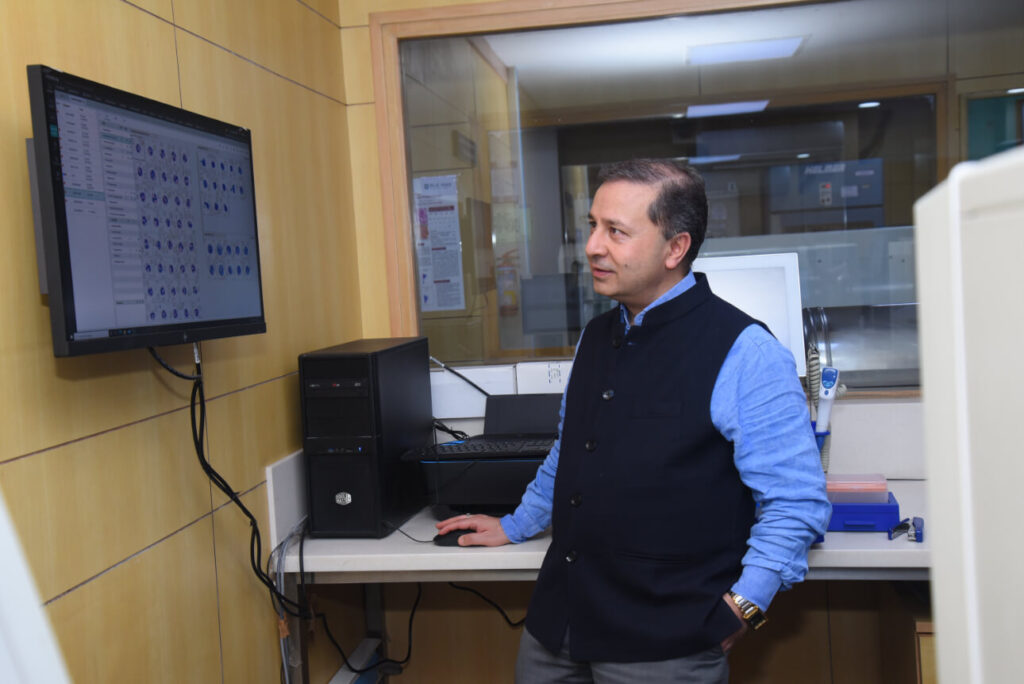
Dr Anil Handoo, Senior Director, Hospital Laboratory Services and SeniorConsultant – Hematology, Max Healthcare Institute Limited, BLK Super Speciality Hospital,is MD, Pathology, is an expert for various national and international committees forhematology and flow cytometry, and also faculty – Flow Cytometry for industry andacademic institutions. His areas of expertise are hematopathology, Flow Cytometry,Hematologic Disorders, Coagulation and Cytomorphometry. He is also a technical assessorfor NABL in the fields of Hematology, Molecular Hematology and Flow Cytometry.
He has more than a decade of experience in the overall operation and administration of alaboratory with competency in standardization and quality control of laboratory proceduresand expertise in reporting and providing consultation for malignant and non-malignanthematological disorders. In addition to diagnosis of hematological malignancies by flowcytometric immunophenotyping, stem cells, molecular hematology and “thalassaemia-screening” utilising HPLC/hemoglobin electrophoresis, working on and optimization ofhematology analyzers are close to his heart and form his core interest with a number ofpublications to his credit.
Dr Anil Handoo Talking About Digital Morphology and Role of AI in it
When asked about the aspects of digital Morphology that need to change or evolve, he opines that change is constant, and we habitually settle for that.
Dr Handoo strongly believes that High-speed scanning with the upgradation of AI and continuous machine learning for the pre-classification of cells would help improve the output. “Also, remote web-based access with cloud-based data storage is the way to help us utilise the system better,” says the expert.

Dr Anil answered a few questions at the conference regarding the changes and technology being adopted in the field of his expertise and how technologies ensure effective results.
Q. You have almost two decades of experience in the field of Hematology. According to you, what are the major factors that have changed the face of Hematology today?
Technological advancements in the cell counter/Hematology analyser science, along withautomation of majority of the critical steps in analysis, have been the major changes in recentyears, which have led to facilitation of cellular analysis, and improved the way we work inlab. Right from improvements in technology, with better flag optimization, todays’ hematology analyzers are able to not only differentiate mature cells, but also have the abilityto accurately pick up the presence of abnormal cells. With addition of Digital Morphologyplatform and Artificial Intelligence (AI) with Machine Learning (ML) algorithms, digitizedMorphology has further enhanced the ability of picking of incidental findings on the smears,which sometimes were missed by manual microscopy for the sheer lack of time and focus on every slide.
Q. If you have to explain the concept of Digital Morphology to a layman, how will you do that?
Digital Morphology is nothing, but visualization of peripheral blood smear microscopy usingcamera, and automating the image capture with projection on to a computer, instead ofmanually seeing a slide on the microscope. Digitization and AI-based pre-classification ofcells on the smear ensure less amount of time spent on every smear with enhanced workflowefficiency. There is also an advantage of having stored digital image data not only for reviewsat a later date, but also a possibility of remote viewing and opinion seeking.
Q. How has Digital Morphology revolutionized the field of Hematology?
Digital Morphology, with AI-based algorithms, has ensured highly reproducible cellular classification, quantification of abnormalities, not only for the white blood cells, but also forred cells and platelets. Possibility of scanning the smear on edges for presence of plateletclumps, or any other abnormalities enhance pick up rates of such abnormalities. Additionally,review and valued opinion of an expert from a remote location, with real-time incorporationinto the report has been made possible.
Q. What is the role of AI in Digital Morphology? Can you explain with one/two examples?
AI is adding new dimensions to morphology analysis, and the predictive capability of the Hematology analysers has been increased by many notches up. For example, let’s say there is an abnormal cell or parasite present but in very small numbers. The human eye has a chance to miss it, but since a digital morphology analyser will look into many more cells than human microscopy, the chances of it getting picked up are higher.

Q. Will AI replace the role of humans in pathology laboratories?
I do not see that happening in near future. However, AI-assisted cell analysis helps humans inobtaining more precision and accuracy.
Q. To what extent can we rely on the results delivered by AI?
As long as instrument is well-maintained and smear is appropriately stained, I would trust AIto do a reasonably good job most of the times.
Q. How can Digital Morphology be made affordable so that it can reach the masses? What are your suggestions?
Increasing the awareness regarding use of Digital Morphology would ensure increaseddemand. In parallel, miniaturization of devices with smaller footprint and reduction ofproduction costs would help make affordable to masses.
Q. According to you, what are the aspects in Digital Morphology that need to change or evolve?
High-speed scanning with upgradation of AI and constant machine learning for pre-classification of cells would help improve the output. Also, remote web-based access withcloud-based data storage is the way to go to help us utilize the system better.
Q. Can you please share your experience of using Mindray’s Hematology System in your laboratory?
Adoption of newer methodologies gets you across newer challenges; Digital MorphologyPlatform (DMP) integration into our routine workflow was no exception. Our initial experience has been that of learning and change-management. However, once we settled, the experience has been exhilarating. We have had some very interesting and beautiful pick-ups by the DMP, and many beautiful images of cells with characteristic morphologies. While we bask in the glory of digital morphology, I still feel there are some areas of improvement and I trust Mindray Team is constantly working to improve the system.

